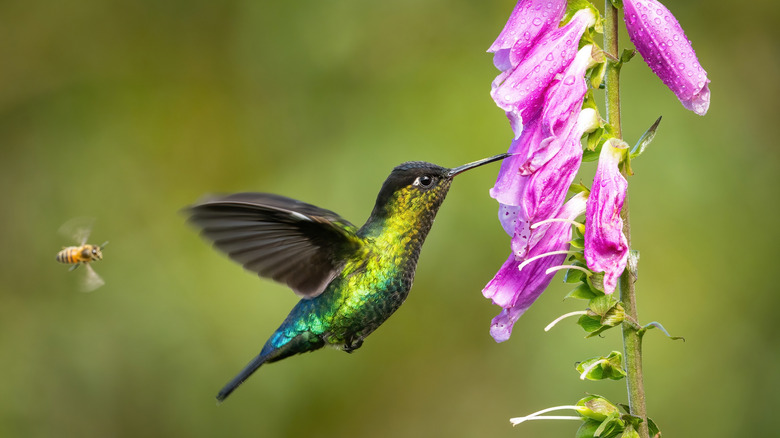The Bright & Sunny Flower That'll Bring A Variety Of Birds & Pollinators To Your Yard
The name southern sundrops (Oenothera fruticosa) matches this flower's appearance remarkably well. Each lemon yellow blossom resembles a bit of sunshine dripped onto the ends of green foliage. This wildflower, native to the Southeastern U.S., also goes by sundrops and narrowleaf evening primrose. No matter the name, these flowers are as attractive to wildlife as they are to human eyes. Southern sundrops' nectar calls out to several bee species and hummingbirds. Once seeds form, the plant is a food source for songbirds like mourning doves and eastern goldfinches.
The flowers also feed 16 different species of butterflies and moths, as well as a wealth of other insect species. Although southern sundrops don't meet the same beauty potential in gardens as you'd see in the wild, this minor drawback could instead spur you to turn a patch of lawn into a field of wildflowers to recreate sundrops' natural habitat.
Southern sundrops are common in the deep south, but their range extends to New England, the Great Lakes states, and as far west as Oklahoma. Given the vast spread of this plant, tucking a few southern sundrops into your flower beds might be a great fit for homes in USDA Hardiness Zones 4 through 8. If you've been wanting to start a pollinator garden, keep southern sundrops on your shortlist.
Planting and maintaining southern sundrops
These bright perennials aren't too finicky about where they put down roots. In the wild, you'll see sundrops popping up along roadsides and in dry forests, meadows, and rocky outcroppings. Plant them from seed either in spring or fall once temperatures are consistently 70 degrees Fahrenheit or warmer, and they should germinate in as little as a week.
These low-maintenance flowering plants are pretty resistant to disease and pests, and hot, dry locales suit them fine. They'd like a space in your garden with full sun, but southern sundrops will also manage well in part shade. As for soil, southern sundrops will thrive in fertile, moist, well-draining soil. However, occasional dry periods won't cause them any harm. Sandy, loamy, clay, or rocky soils can also provide a hospitable spot for southern sundrops. Once they're established, your southern sundrops are known to bloom from April through August.
In warmer areas, southern sundrops can be evergreen. Once the blooming season has passed, southern sundrops put on a show of purplish-green leaves and bear fruit that can sustain birds well into November. Southern sundrops' foliage is somewhat deer-resistant, but at times, you might find whitetails snacking on the leaves.

